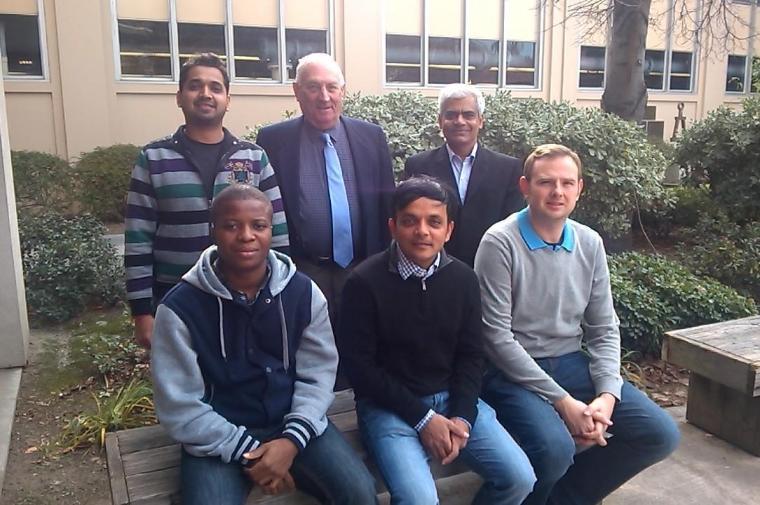
A Decade of Electron Device Development
For the past ten years, the Department of Electrical Engineering’s Electron Devices Laboratory (EDL) has advanced research in the areas of electronic devices, materials, and their manufacturing technologies, conferring ten Ph.D. degrees along the way.
While Santa Clara University may not have the advanced labs or large cohort of internationally known scientists and highly qualified support technicians that a Research 1 university can offer, the EDL has at its helm Associate Professor of Electrical Engineering Mahmudur Rahman, a dedicated scholar and mentor, who guides students through the daunting task of identifying a research topic and advises them as they perform original research worthy of publication by a top-tier technical journal and produce more than two conference papers of sufficient quality to be accepted for exposition at national and international technical conferences.
For the past decade, the EDL has been contributing world-class research and scholarship in a wide range of fields. Norman Gunther, who had studied electrical engineering at SCU for two years before changing majors and graduating in 1959 with a bachelor’s degree in physics (and, in true Bronco fashion, a minor in philosophy), had a successful career as a nuclear engineer before the bottom fell out of that industry at the end of the 20th century. He returned to SCU to take courses in transistors, liked it, and went on to earn his doctorate in 2004 at age 66. He continues to collaborate with fellow graduates of the program, advancing the methodologies used to characterize surface nanostructures of thin films used in semiconductors, and advising current graduate students as an applied mathematician. "The people in the program have all been exceptional. It would be impossible to do this work without companionship, and Dr. Rahman has created a very collaborative environment in the EDL. One of the biggest hurdles for any Ph.D. candidate is technical writing—it is not something most of us engineers do well, but Dr. Rahman is quite good at it. Though he was born in Bangladesh, he was introduced to the English language early on through attendance at a Catholic high school. Later, he earned his doctorate at the Tokyo Institute of Technology. He is fluent in a number of languages and is quite an accomplished technical writer, which is so helpful to Ph.D. candidates," said Gunther.
Current doctoral candidate John Rose, S.J., agrees. "Getting published has become immensely difficult due to the large number of STEM [science, technology, engineering, mathematics] graduates being produced from institutions around the world. The resulting pressure for publication has put an enormous burden on the remaining adequately refereed, impactful journals—especially English-language journals. The EDL exists to help prospective Ph.D.s meet these challenges," he said.
Rose, a Jesuit priest from India, who joined the EDL in 2011 and also arranges summer immersion trips for SCU engineering students at the Jesuit engineering schools in India, proudly notes that a number of papers written by his colleagues were accepted for the Device Research Conference—a highly prized goal among device researchers—and one member won the "Best Student Paper" award at an international conference in Rome. Rose's own paper was recently accepted at yet another first-tier conference in China.
The Lab’s most recent Ph.D., Abdus Sattar '14, is putting his research to work at his new start-up company offering a software product that performs analysis of the trench insulated gate bipolar transistor (TIGBT) that is one of the keys to widespread adoption of EV and solar technologies. According to Gunther, Sattar's work "is central to power electronics and terrifically more important with EV autos and alternative sources of electricity needing to be conditioned before they are used."
Summing up the impact of the EDL over the past ten years, Rose commented on behalf of the group, "At the time of our founding, 'electronics' was practically synonymous with 'logic circuits,' 'Moore’s Law,' and all that. At the present time, 'all that' has turned into a conflagration of outlandishly difficult technologies that require unimaginable resources to pursue. At EDL, we have discovered talents and resources to model devices for power electronics on the cutting edge. We intend to stay here."